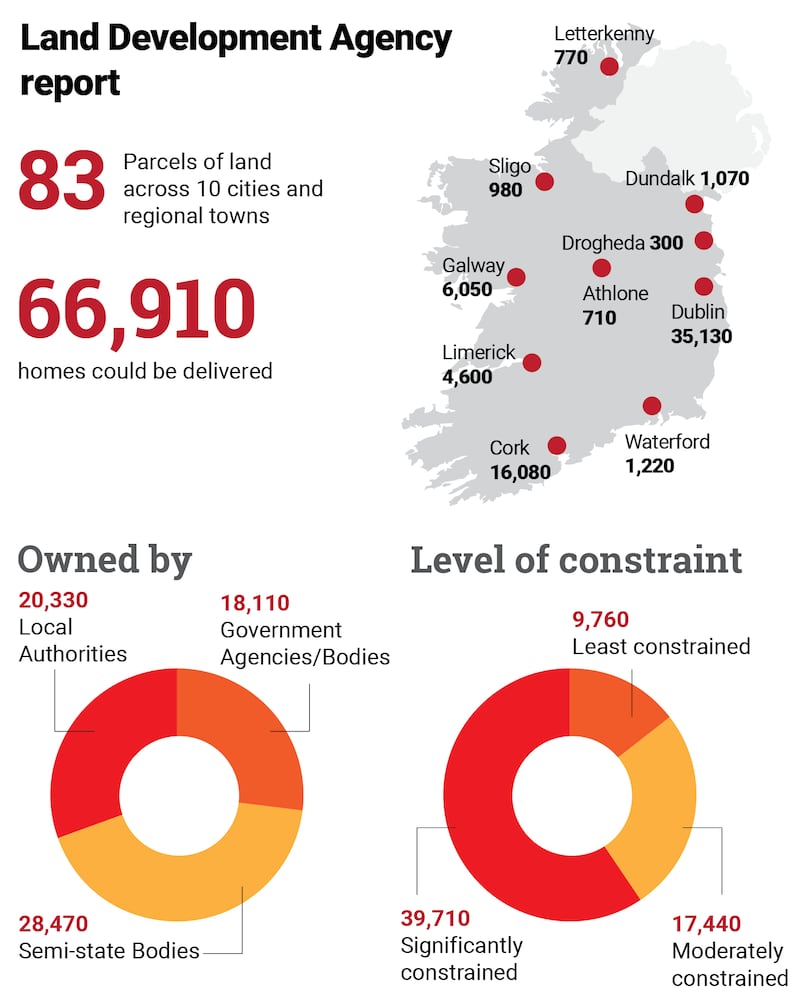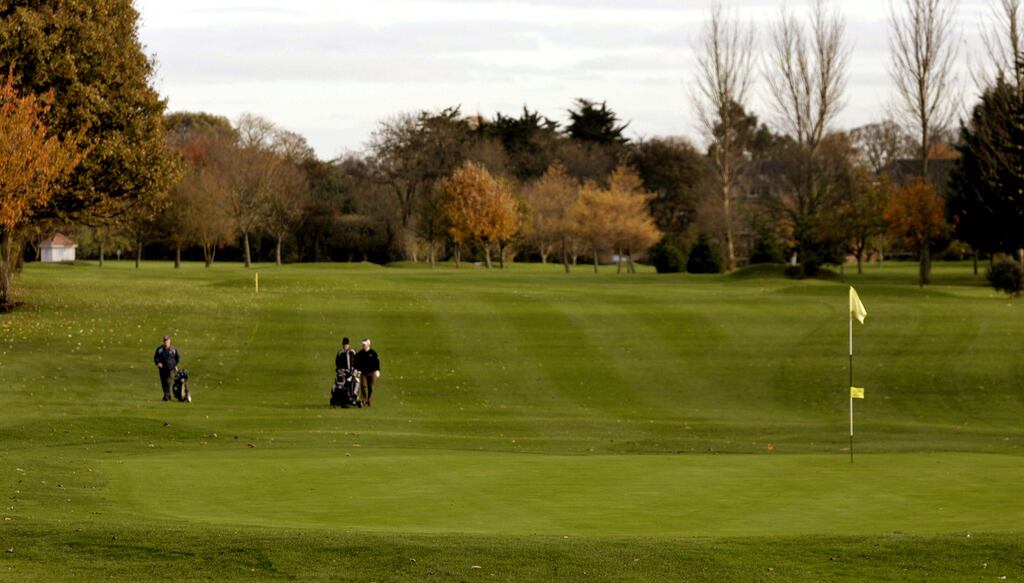Amid political turmoil over the housing crisis, a report for the Land Development Agency (LDA) says State bodies are sitting on enough sites to build almost 67,000 new “affordable” homes on. While this is a long-term projection, it shows considerable scope to boost housing supply on real estate within Government control.
“It was a complex and lengthy exercise,” the agency’s chief, John Coleman, said of the report scoping out opportunities for housing on public land in Dublin, Cork, Limerick, Waterford, Galway and a handful of other locations.
The actual building work will be a lot more complex and time-consuming than trawling through tens of thousands of property records to identify the sites, however.
For the first time, the agency’s assessment quantifies property assets held by public bodies that can be deployed for housing. As such, it shows there is enough land in State ownership to deliver more than a quarter of the apartments and houses needed to meet the deficit of 250,000 homes set out recently by Taoiseach Leo Varadkar.
READ MORE

With little relief in sight as the crisis worsens, that stands as a measure of good news for the future pipeline of homes.
The report, however, is equally clear that big hurdles remain to be overcome before any homes at all are built on such sites. Just as the opportunity to unlock State land is now clear, so too is the challenge. The prize is not within grasp in the short term.
Of the 66,910 housing units deemed possible in the long term, only 9,760 are in the “least constrained” class that could be delivered within five or 10 years. Construction and infrastructure costs are likely to be in excess of €3 billion, a figure that excludes land and relocation costs, although money is not really the main problem.
Sites in the Dublin City Council area include the 24.8 hectare (61.3 acre) Clontarf Golf Club, which could hold up to 2,480 homes (at a prospective cost of €759 million), but is already in the sights of developers. HSE land used by the National Ambulance Service site at Davitt Road, Drimnagh, could take up to 730 homes while CIÉ railway sidings by Sheriff Street Upper could accommodate 800.
Another 17,440 prospective housing units are in the “moderately constrained” class of site that might be built in the period beyond that. Further away still are the 39,710 prospective housing units in the “significantly constrained” class.
[ At least 60,000 homes could be built on State land, long-awaited review findsOpens in new window ]
That all sites identified by the agency are “constrained” in one way or another tells its own story. More glaring still is the assessment that it would take six years to build homes on the most straightforward sites – allowing time for designs, public consultation, planning, procurement and construction. These “industry standard” time frames offer no hope for an immediate uplift in housing delivery.
The same goes for another critical constraint on Coleman and his team. “The LDA doesn’t have powers to compel access to the land,” he said.
Just because the agency says land in the possession of State bodies could be used for housing, it does not mean it will inevitably be deployed for that purpose. Given the tendency of public institutions to seek to keep what they hold, arguments with State agencies and the Ministers who ultimately oversee them is likely.
It follows that any move to seriously unlock public real estate for homes will require political decisions – and set off practical questions about the need for replacement accommodation for the activities currently happening on the sites.
One example is the 15.7 hectare (38.9 acre) site at Cathal Brugha Barracks in Rathmines, already the subject of a feasibility study on military land needs. Who will have the final say over the future of such lands? And to what extent will housing need trump Army prerogatives on these “significantly constrained” lands?
These are political questions ultimately and the answers will determine whether an appreciable number of homes can actually be built on such sites.
It was always clear that the State had abundant surplus land that could very well be used be for housing. Identifying the sites in question is but the beginning. The need is there but is it matched by the will to make it happen?














